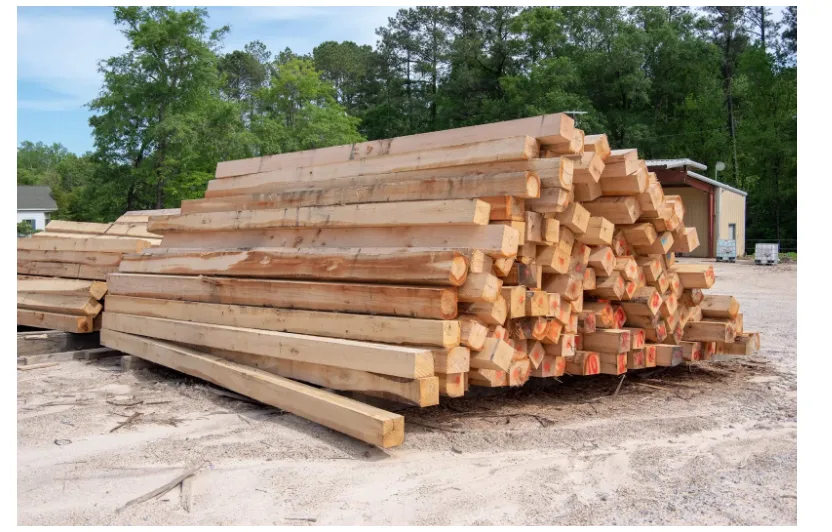What is the difference between timber, lumber, and wood?

The difference between timber, lumber, and wood is very minor. People who are related to this field in any way should be clear about the difference because their use is distinct. Normal people use the terms interchangeably, which is so wrong, but it’s fine for them because they do not need to get into their technical use. It is important to know what each type of wood is and how they are used.
In construction, people often hire cost estimating services when they are planning a construction project. This estimation service provides services for the estimation of all sorts of sub-projects that happen during construction. If one project is related to the use of lumber or timber, the estimating service will calculate the cost for it. This article will discuss the difference between the three terms. Let’s start by understanding the basics of these woods.
Understanding the Basics:
These types of wood have further types also. And their technical detail are different. But let’s understand the basic difference in simple terms.
-
Wood:
This is the natural material obtained from a tree. The trunk and the branches are included in it.
-
Timber:
This wood is treated in factories for construction or carpentry purposes. But it is not cut or sawn yet; it is in its original form.
-
Lumber:
This is the timber that has been cut into certain sizes to be used in construction. It comes in the form of boards and planks, which are easy to use for projects in building.
Wood Explained:
There is not much explanation required for the wood. It is simply the raw wood that comes from trees and is not processed yet. It is also used for paper production or as firewood, also. However, it has two very important types.
-
Hardwood:
- It comes from trees that annually shed.
- The wood from these trees is dense.
- It is good for making high-quality furniture.
- It can also be used for flooring.
-
Softwood:
- It comes from trees such as pine or spruce.
- These are less dense.
- These are easy to cut and are lighter, which makes them easy to use.
- It is preferred for framing houses.
Timber Explained:
When wood is to be used in construction, it should be processed a bit. It should be able to work well even if there is moisture or there is a danger of insects. This is why the wood is treated, because it has to be used in certain places. Timber is commonly used for:
- Framing the building.
- It is used to make roofs or floors.
The meaning of “timber” can slightly change depending on the region you live in.
- In British English, it means that wood is sawn and is ready for construction.
- In American English, it means that it is simply wood, not even processed yet.
Lumber Explained:
Lumber is formed after timber. When you cut it into sizes, it can be used for different projects in construction. The pieces are easy to handle and easy to install in certain spaces. Because you can get them in very good sizes from the market. So, instead of wasting wood in cutting, just buy lumber of your desired size. The two types of lumber are:
-
Rough Lumber:
This wood is cut into different shapes and sizes, but it is pure wood. It’s not changed, except that it is processed.
-
Finished Lumber:
This wood is polished and made smoother. It makes it suitable for furniture and flooring where looks matter.
If you are planning your home project, and it is mostly made of wood. You will need lumber in large quantities. It is better to get Lumber Estimating Services for such a project. They can calculate its cost according to its use in the project. It will help you plan your finances better.
Why the Cost of Wood Can Vary:
There are certain factors that can affect the price of wood. These factors are related to its type, how far you are sourcing it from, and some other reasons.
-
Type of Wood:
- Hardwood is more expensive because it is dense.
- Softwood is less expensive. It is less dense, but it does not mean it is not good.
-
Moisture Content:
- The wood that has less moisture in it, because it is dried, is expensive because it is an extra step.
- The wood that is processed adds to its price because of an extra step.
-
Availability:
- If the wood is bought from a place where the source is near, the price is low.
- If the source is far, then the transportation cost adds to the cost of wood.
-
Demand and Supply:
The demand for wood increases once a year when construction projects occur a lot. At that time, the price of wood increases.
Conclusion:
The difference between timber, lumber, and wood is not understood by many. People think of all the types as simply wood. Anyone who is related to the construction business or carpentry should know the difference between these types. Because each type of wood has different qualities and should be used according to them. If a wood is good for roofing, it should be used for that rather than using some other type. A Construction Takeoff can help you decide what kind of wood you need for what kind of project. They also provide you with an estimate of how much material you would require.
